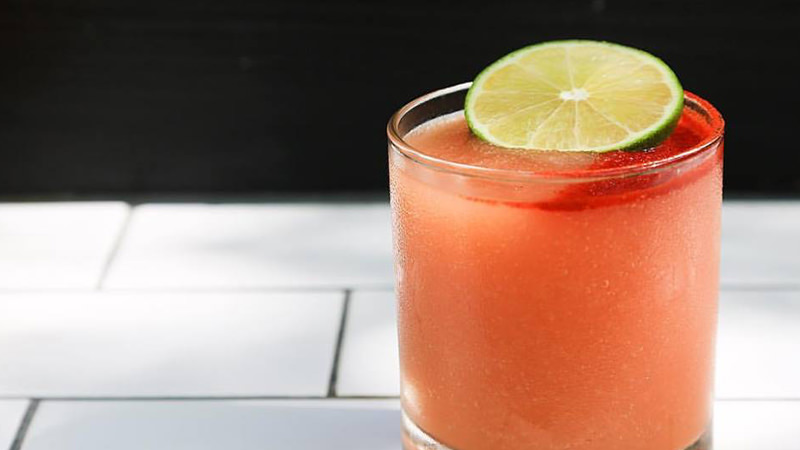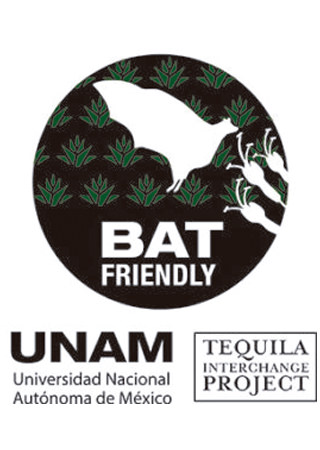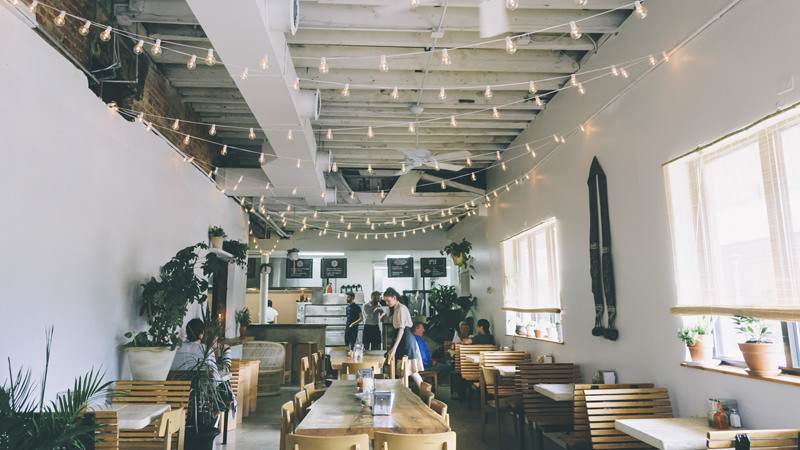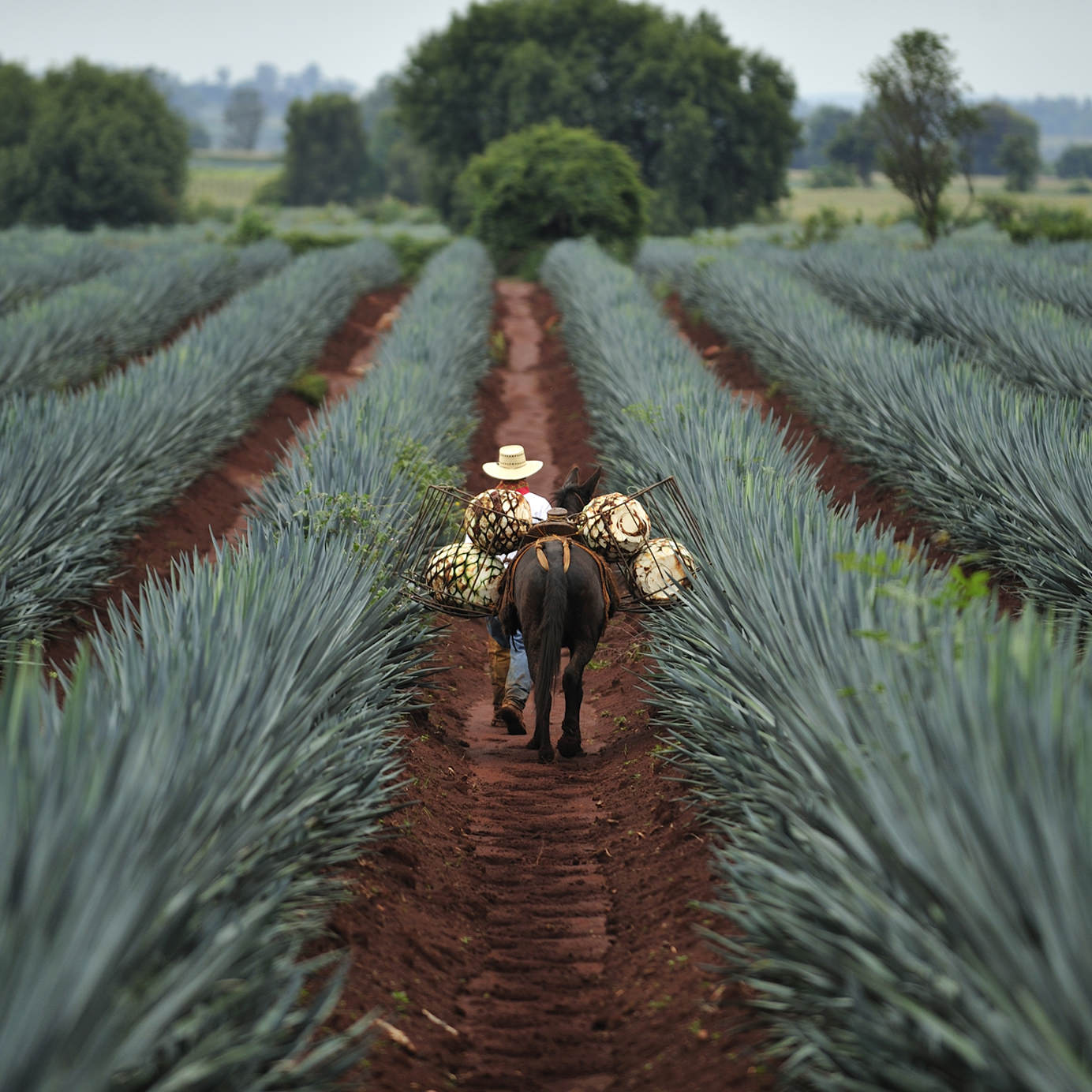A trip to an American grocery store is rife with existential struggle for conscientious consumers. Do we want conventional, pesticide-spritzed tomatoes grown somewhere far away but temptingly priced $1.99 per pound? Or are we going to shell out $5 for the organic ones from a farm down the road?
Drinkers are facing a similar conundrum with bottles of tequila at cocktail bars and corner stores nationwide. The consequences – involving bats, the health of farm workers, and the fate of an entire industry – are arguably more apocalyptic.
*
After decades of being wildly mismarketed and misunderstood in the United States, tequila is on the rise. Last year sales were up 7.4 percent, according to the US Beverage Alcohol Review, and the category claimed a record 7.5 percent share of the spirits sector. High-quality sipping tequilas are elevating its previous reputation as a cheap shooter or base for margaritas.
That’s due in part to the prevalence of 100 percent agave versions available throughout the United States. These are authentic tequilas, so deemed because they are made from the fermented sap of the blue agave plant grown in the area surrounding Tequila, a city in the central western Mexico state of Jalisco. Typically they are distilled twice, using traditional methods that date back to the 16th century.
Bottles marketed simply as tequila (without the 100 percent agave qualifier) or mixtos are only required to contain 51 percent agave. Corn syrup, sweeteners, or sugars derived from molasses make up the remaining 49 percent, along with artificial aromas and other industrial additives that don’t have to appear on labels.
David Suro, co-founder of the sustainability-minded non-profit Tequila Interchange Project, says that the differences between “mass-market tequila” and 100 percent agave tequilas made from years-old, fully developed plants is “like a completely different drink.”
Brian Smith, beverage director of Brooklyn’s Colonie and Gran Electrica restaurants, agrees, saying it is “impossible to overstate” the differences “between a tequila that’s been produced from 100 percent agave plants grown over many years and allowed to mature” versus industrially produced tequilas. “It’s like comparing chicken stock that has been made from a real chicken and simmering on your stovetop to the instant powdered mix,” Smith says.

The market is getting more aware of these differences. “Around 2000, things started really changing for tequila in America,” Suro says. Cocktail culture kicked off a nationwide renaissance. Moreover, as Americans became more invested in how their food and drinks were farmed and sourced, they started seeking out authentically made, 100 percent agave tequilas.
The tequila export market in Mexico is worth roughly $1.3 billion. According to the Tequila Regulatory Council, exports of 100 percent agave tequila made up 43 percent of all tequila exports in 2015. From January to August of 2016, 100 percent agave exports grew by more than 17 percent, while standard tequila exports dropped by 4 percent. Before 2000, Suro estimates that roughly 5 percent of the tequila on the market was actually 100 percent agave.
The trickle-down effect means a lot more tequila being purchased, and a lot more agave being grown, sometimes by using shortcut methods that have had unintended results.
“As pressure on agave farmers increased to produce more, in some cases production practices became more irresponsible,” Suro says. “I and other people in the industry who care not only about tequila, but about the people behind tequila … want to help consumers approach tequila from a different angle.”
The Tequila Interchange Project aims to show consumers “that their choices have a huge impact on the environment and culture of Mexico,” Suro says.
Ivan Saldana Montelobos, Ph.D., is a chemist and agave expert, and a vocal advocate for greater transparency in agave production and consumer awareness.
“The tequila industry is in crisis,” Saldana Montelobos says. “The entire industry could fail due to increased, irresponsible growing methods. Traditionally, the growers of agave were not the producers.” As multinational brands increasingly acquire brands such as Don Julio and Del Maguey, the motivation shifts from cultivating agave using traditional and sustainable methods to simply growing more agave faster.
*
And the agave plant? That is one complex angiosperm. When agave tequilana, or blue agave, reaches maturity (which takes several years), it grows a stalk that can tower up to 16 feet and is crowned with yellow flowers.
In the wild, the plants reproduce when an animal, usually the Magueyero bat, carries pollen from the flowers of one plant to another, creating unique strains and pollinating countless generations along the way. This method ensures genetic diversity and strong, healthy plants. Traditional agave growers historically also allowed a portion of their flowered stalks to remain as a means of increasing the strength and health of their agave field overall.
In commercial production, the stalk is usually cut so more of the plant’s energy can be channeled to its heart. When the stalks are removed, commercial farmers have to manually reproduce the blue agave by planting the shoots.
“Commercial reproduction methods essentially clone the plants, and on an industrial scale it’s devastating,” Suro says. “This method not only threatens genetic diversity, it weakens the agave plant … The only way to protect the weaker plant is by using agrochemicals, in increasing doses. This in turn weakens the soil.
“So now, we are seeing weaker and weaker and smaller plants that require more and more chemicals to grow,” Suro continues. As a result, “more acres of agave are planted and the vicious cycle is continued.”
The TIP estimates that 98 percent of Mexican agave growers have adopted industrial methods.
Rodrigo Medellín, Ph.D., head researcher at TIP and a professor at the Ecology Institute of the National Autonomous University of Mexico, has studied the genetic diversity of remaining blue agave plants for several decades. His findings show that now more than 160 million plants are clones of only two plants. This places blue agave production, and by extension the tequila industry, at incredible risk. (Much like when the phylloxera bug nearly decimated France’s wine industry.)
“The agave is part of a trophic chain of life when grown sustainably,” Suro says. By industrializing the food chain, we are disrupting a delicate dance to which we don’t yet know the steps. “Bats, butterflies, and other insects feed on the agaves and pollinate them,” he says. “They depend on the agave for survival, but so do the other animals and birds that feed on them. The industrialization of agave farming has thrown off the delicate balance.”
Not to mention the effect that all the use of agrochemicals is having on the people who are employed to work in these fields.
“Producers in this region are using chemicals banned in most of the world but allowed in India and Mexico,” Suro says. “The effect on the health of the farm workers, the runoff in the water” is tremendous.
*
Now Suro and Medellín, dubbed the “Bat Man of Mexico,” are hoping to change the ways Mexican farmers grow their product and consumers purchase tequila. Their bat-friendly tequila project is equal parts awareness campaign and sustainable best practice.

Bat-friendly tequila brands agree to allow 5 percent of the agave plants in their farms to flower. This feeds bats and other pollinators and helps guarantee genetic diversity in the fields, which then reduces the need for powerful, dangerous agrochemicals. Participating labels are designated with a logo, somewhat akin to rainforest alliance certification for coffee.
To get the word out, Suro and Medellin are holding events, tastings, and lectures, and working directly with bars like Clavel, a Baltimore watering hole that specializes in mezcal and tequila.
“We love the bat-friendly project at Clavel,” Lane Harlan, beverage director, says. The bar has a drink called Biznaga made with Sotol por Siempre, a rare agave spirit; for every Biznaga sold, Clavel donates $1 to the bat-friendly project. The bar also sells locally designed T-shirts for $25, $5 of which is donated.
“The ideology is a no-brainer,” Smith, the Brooklyn beverage director, says. “It just so happens that sustainably produced tequila tastes better, too.”
Still, it’s an uphill battle. “There is a large and very understandable gap in the public’s awareness that choosing to support a particular brand of tequila could have an impact on the ecosystem and culture of Mexico,” Suro says. “We’re hoping to bridge that gap faster.” He hopes that the label will soon direct consumer purchases in the same way that the 100 percent agave designation has.
“We see these bartenders, who are more passionate about spirits and education than anyone, as being the key to the Bat-Friendly Project’s success,” Suro adds.
Ryan Wainwright, mixologist at Los Angeles’s The Ponte restaurant and buzzy Faith and Flower, supports the bat-friendly project but says getting customers on board has been more of a challenge.
“The public does care but I haven’t seen them become comfortable letting that concern affect the way they drink,” Wainwright says. “When I talk about sustainability in agave people are very receptive but they still like ‘their brand.’ Quite frankly it is going to take some time.”
*
Paying a fair price for high-quality products isn’t cheap. As with other foods and beverages that require craftsmanship, free trade for ingredients, and considerable labor costs, bat-friendly and 100 percent agave tequilas cost more than industrially mass-produced varieties.
But the alternative — cheap, bad tequila, with a chaser of dangerous farming and unsustainable production — will likely exact a much greater price down the road.

